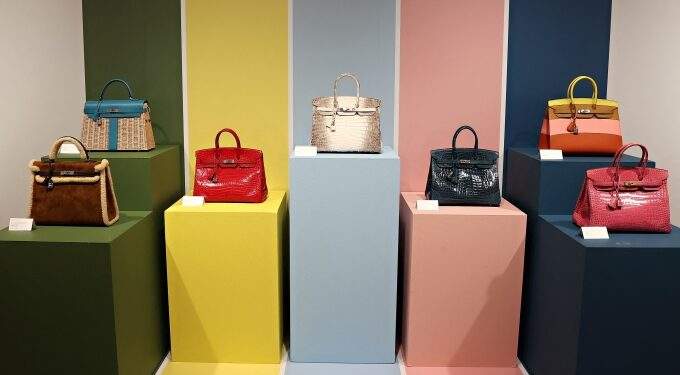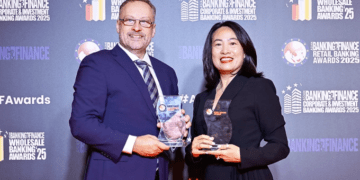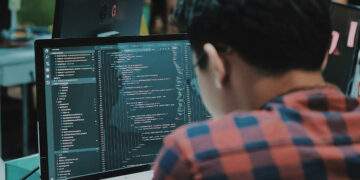At Vestiaire Collective, a popular platform for pre-owned luxury goods, spotting fakes has become a relentless challenge for its authenticators.
As more consumers turn to the second-hand market for cheaper designer items, sellers are following suit, listing increasingly rare and expensive pieces, Bloomberg reported.
Vestiaire has recently seen listings for a 125,000-euro (US$147,000) Hermès Himalaya handbag and a 45,000-euro lapis lazuli Cartier watch and, the kind of items once reserved for high-end auctions at Christie’s or Sotheby’s.
At those prices, authentication is no longer just a value-add; it is a necessity. In 2021, less than a third of the items Vestiaire rejected were flagged as likely fakes. Today, that figure has climbed to more than half.
 |
|
A view of Hermès Birkin bags on display during a press preview of the upcoming Luxury Week at Christie’s on June 04, 2021 in New York City. Photo by Getty Images via AFP |
The problem extends far beyond any one platform. Counterfeiting is a global industry worth an estimated $467 billion, according to the Organization for Economic Cooperation and Development.
And the costs are not limited to businesses’ bottom line. In 2023 alone, losses linked to fake goods led to more than 260,000 job cuts worldwide, Forbes reported, citing a recent report by luxury authenticator Entrupy.
The environmental impact is equally troubling as 36.2% of counterfeit items tested contained hazardous toxins that can often leak into soil, water, and air.
But counterfeits are growing more sophisticated and even seasoned experts are finding it harder to keep up, especially in the handbag market.
Spotting fakes can often come down to the smallest tells, according to Alison Young, a master authenticator at luxury recommerce firm Fashionphile.
“You have to look at the smallest details — the stitching, the weight of the thread,” she told Vogue, pointing to the interlocking “CC” logo inside a classic black Chanel flap bag as an example.
Some counterfeits are now made with leather from the same tanneries and hardware from the same suppliers as the originals.
Sneakers present a different kind of challenge. At Entrupy, CEO Vidyuth Srinivasan says fake sneaker operations are not only producing near-perfect replicas but also collecting feedback to refine them.
“Sneaker counterfeiters are surprisingly sophisticated,” he says. “Their ability to replicate designs and market their products as genuine makes our work even more critical.”
Industry terms like “super fakes,” “Triple-A fakes,” and “line-for-lines” have emerged to describe knockoffs so convincing they blur the line between genuine and fake.
To keep pace, luxury resale platforms and brands have stepped up their authentication efforts in recent years.
At Vestiaire, that means investing heavily in training. New hires at its authentication academy in Tourcoing, France, complete at least 750 hours of instruction, learning how to identify materials, analyze construction techniques, use tools and detect the latest counterfeiting tactics. They become specialized in one category, whether it be handbags, clothing, footwear, jewelry, or accessories, after two months.
The platform also collaborates with more than a dozen luxury brands, some of which assist with complex appraisals or lead training sessions at the academy, according to Victoire Boyer Chammard, the company’s head of authentication. In return, Vestiaire offers the brands convincing counterfeits or insights into such items.
“We have data we can share about the evolution of counterfeiting of their brand,” Chammard says.
Entrupy has been using artificial intelligence to enhance its authentication process.
“Human authenticators are talented, but their expertise is limited,” Srinivasan explains. “They can’t keep up with all the new brands, batches, and factories like we can. That’s where AI becomes essential because it analyzes over 2,000 unique characteristics per image.”
Brands are also developing their own anti-counterfeiting measures. Chanel, for instance, has replaced its iconic black plastic authenticity cards with holograms and microchips embedded into its bags, allowing them to be scanned for verification.
Similarly, Prada’s recycled gold jewelry now comes with authenticity cards that let buyers confirm the origin and background information of each piece.
Yet as brands and platforms invest in more advanced anti-counterfeiting measures, a question remains: Does authenticity matter to consumers if fakes are so good that even humans struggle to identify them?
Counterfeits across a wide range of industries are fueling doubts about the integrity of products, even from trusted brands.
A 2019 report by INCOPRO found that nearly one in three U.S. consumers have intentionally bought fake clothing, jewelry, or leather goods online and more than half have done so unknowingly.
At the same time, frustration with luxury brands’ pricing has been growing. According to HSBC, average luxury prices are now 54% higher than before the pandemic in 2019, with some flagship items seeing even steeper increases. Chanel’s 2.55 flap bag has climbed 91% while Louis Vuitton’s Speedy bag has doubled in price.
Price hikes have caused some to walk away, while others have grown critical of slipping quality amid viral reports of crooked stitching, cheaper materials, and poor working conditions on social media, according to trade magazine The Business of Fashion.
“Consumers are not naive,” said HSBC analyst Erwan Rambourg. “There’s an element of arrogance—so-called ‘greedflation.’”
It is only natural for luxury goods to be expensive, but even the richest buyers are questioning whether today’s products justify the cost or are just inflated.
“Consumers are becoming more discerning, but counterfeiters are evolving faster,” Srinivasan says. “This gap in trust is a challenge for brands striving to uphold authenticity in the face of growing skepticism.”
As the line between real and fake blurs, particularly for a generation that prioritizes accessibility, the value of authenticity itself is being challenged. To maintain their relevance, luxury brands must back their prestige with desirable heritage and unquestionable quality.
Restoring faith in brand authenticity amid the growing counterfeit crisis would require innovative solutions, according to Entrupy’s report.
As fake goods grow more sophisticated, the fight to protect authenticity must stay relentless, powered by innovation, vigilance, and a commitment to ethical production and responsible consumption.





